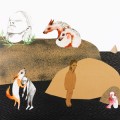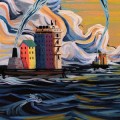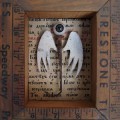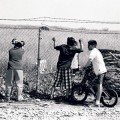“My friend used to call me Little Lost Indian, and I just went with it,” says Sid Enck. Choctaw by blood, but artistically driven by Hopi and Apache traditions, Sid will be showing his work in the Metro gallery beginning on South First Friday.
Sid Enck Jr., or Sidenck, works in a small, utilitarian space. In a tiny garage off of 15th Street, Sid sits at a Singer sewing machine. Today, he is busy making various quilts. They are not traditional. He has picked up material along the way, throughout the years, and now it will become a visual history of some of his travels. “These bones I’ve sewn in there”—he points to one of the quilts, which will be on display—“are from a raccoon I found dead, on a bike trip in Santa Cruz.”
Raccoon bones, rattlesnake skin and grip tape are just some of the things Sid weaves into his work. “I like to gather and recycle,” Sid says, while thumbing through various scraps of media, including a Redman tobacco pouch, which he includes in one of his quilts. Sid’s not afraid to take native imagery back from marketing material and showcase it in a place of artistic reflection.
His style echoes time spent traveling through the Southwest. His influence wasn’t garnered in a classroom, or through book studies. Instead, Sid learned on the streets, from native artists, most of them Apache, and many without permanent residence. His quilts reverberate with the motifs of Apache art, while his dolls are influenced by Hopi traditions. They are not re-creations though; they don’t strive to be historically authentic. Sid’s work is an evolutionary side-step to the art. Many contemporary designers incorporate the style and art of the First Nations into their forms. Sid, on the other hand, isn’t trying to repurpose traditional imagery. His work is new, original, and personal, with an obvious influence from, and respect for, the past.
Sid Enck shows for South First Fridays
Metro Lobby
San Jose
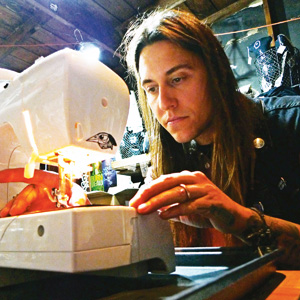
 ‘Reckless’ at The Stage in San Jose
‘Reckless’ at The Stage in San Jose 